
In this lesson, students will work with their group to begin creating their presentation.
- Subject:
- English Language Arts
- Material Type:
- Lesson Plan
- Author:
- Chris Adcock
- Date Added:
- 03/04/2021

In this lesson, students will work with their group to begin creating their presentation.
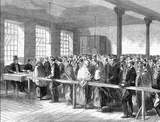
In this lesson, students will examine ways that their writer tailored his or her argument to suit his or her audience, and they'll begin to plan for how they will appeal to a modern teenage audience in their presentation.
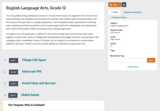
The 12th grade learning experience consists of 7 mostly month-long units aligned to the Common Core State Standards, with available course material for teachers and students easily accessible online. Over the course of the year there is a steady progression in text complexity levels, sophistication of writing tasks, speaking and listening activities, and increased opportunities for independent and collaborative work. Rubrics and student models accompany many writing assignments.Throughout the 12th grade year, in addition to the Common Read texts that the whole class reads together, students each select an Independent Reading book and engage with peers in group Book Talks. Language study is embedded in every 12th grade unit as students use annotation to closely review aspects of each text. Teacher resources provide additional materials to support each unit.

Who decides who among us is civilized? What rules should govern immigration into the United States? Whom should we let in? Keep out? What should we do about political refugees or children without papers? What if they would be a drain on our economy?
ACCOMPLISHMENTS
Students read William Shakespeare’s play The Tempest and write a short argument about who in the play is truly civilized.
Students participate in a mock trial in which they argue for or against granting asylum to a teenage refugee, and then they write arguments in favor of granting asylum to one refugee and against granting it to another.
Students read an Independent Reading text and write an informational essay about a global issue and how that relates to their book.
GUIDING QUESTIONS
These questions are a guide to stimulate thinking, discussion, and writing on the themes and ideas in the unit. For complete and thoughtful answers and for meaningful discussions, students must use evidence based on careful reading of the texts.
What role do national identity, custom, religion, and other locally held beliefs play in a world increasingly characterized by globalization?
How does Shakespeare’s view of human rights compare with that in the Universal Declaration of Human Rights?
Who is civilized? Who decides what civilization is or how it’s defined?
How do we behave toward and acknowledge those whose culture is different from our own?
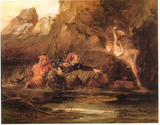
In this lesson, you'll use your detailed outline to write an initial draft of your report. You'll share your writing in triads and receive feedback. Your essay may be chosen for Author's Chair. You'll revise the body of your report and consider ways to embed multimedia elements.In this lesson, students will use their detailed outline to write an initial draft of their report. They’ll share their writing in triads and receive feedback. Their essay may be chosen for Author’s Chair. Students will revise the body of their report and consider ways to embed multimedia elements.

This project unit—a multimedia self-portrait published in digital form—is the capstone of your students' high school careers. It is a chance for them to pause and reflect on where they've been, where they're going, and who they are as a person. Students will reflect on what they want others to know about them: what they want their message to be and what types of media they might use to convey that message. Students will have the opportunity to express themselves in many different formats—through writing, of course, but also through other media of their choosing. Students will be able to convey your message through visual art, photography, a graphic novel, audio, poetry, or video—practically any type of media they want!
ACCOMPLISHMENTS
Students will complete a multimedia self-portrait, capturing important aspects of the essence of themselves.
Students will contribute one chapter from their multimedia self-portrait to a class anthology.
Students will present one chapter from their multimedia self-portrait to the class.
GUIDING QUESTIONS
These questions are a guide to stimulate thinking, discussion, and writing on the themes and ideas in the unit. For complete and thoughtful answers and for meaningful discussions, students must use evidence based on careful reading of the texts.
How is late adolescence a moment of internal and external change?
What are the most important qualities of your character—past, present, and future?
How can you portray these key aspects of yourself using multimedia?
BENCHMARK ASSESSMENT: Cold Read
During this unit, on a day of your choosing, we recommend you administer a Cold Read to assess students’ reading comprehension. For this assessment, students read a text they have never seen before and then respond to multiple-choice and constructed-response questions. The assessment is not included in this course materials.

Students will write their Artist’s Statement and upload it as the final chapter in their self-portrait. They’ll review their entire project to make final edits and plans for completing their work. For homework, they’ll finalize any remaining details and publish their project.

Students will consider the different ways that humor can be used by a writer to criticize people, practices, and institutions that he or she thinks are in need of serious reform. Students will read satirists ranging from classical Rome to modern day to examine how wit can be used to make important points about culture.
ACCOMPLISHMENTS
Students research an aspect of modern life that they would like to lampoon.
Students read from satirists across history to absorb the style and forms of humor and institutions satirized.
Students write their own satire, drawing on techniques of famous satirists to criticize their targets.
GUIDING QUESTIONS
These questions are a guide to stimulate thinking, discussion, and writing on the themes and ideas in the unit. For complete and thoughtful answers and for meaningful discussions, students must use evidence based on careful reading of the texts.
What is satire, and when is it too harsh?
How can humor and irony make you more persuasive?
What do you think is funny? How far would you go to satirize it?
Who gets more reaction—satirists or protestors?
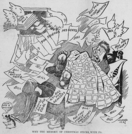
In this lesson, students begin a project that lets them enjoy satire that targets a specific topic or group. Students will be reading and viewing satires that span centuries, and identifying the satirical strategies used in the different works.
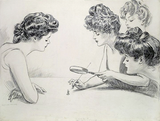
In this lesson, students will look closer at Swift’s essay to understand more fully how he works toward his purpose. Students also compare this essay with other satires they have read so far.

Research a data center career you're interested in using Google Search, then create a presentation using Google Slides. Time to complete: 45-90 minutes

This is a presentation slide deck that helps introduce INFOhio's mission and vision, core services, and licensed and digital resources.

Grow soybeans using Round-Up Ready seeds to illustrate how biotechnology can be used as a tool to increase production. Introduce students to different options for growing soybeans, investigate no-till farming versus conventional cultivation and the effects of each on soil fertility, and analyze Round-up Ready soybean growth. Students share the results of their investigations in a technical paper. This unit features 3 lessons and 9 files. Lessons are aligned to NGSS.

Participate in a simulation that shows how various factors influence plant growth and what role probability plays. Powerpoint with instructions and information included. This unit features 1 lesson and 7 files. Lessons are aligned to NGSS.

Understand and appreciate food producers through this case study and determine what decisions must be made on a yearly, monthly, or daily basis to maintain an environmental system that will continue to produce food and products to meet consumer demands while maintaining soil and water quality. This unit features 3 lessons and 7 files. Lessons are aligned to NGSS.
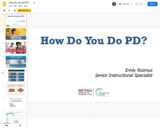
Presentation on how INFOhio professional development called INFOhio Campus meets your needs with free access to high-quality PD focused on collaboration and reflection. When you do PD with INFOhio Campus, you learn how to use and integrate INFOhio's digital content and web tools in your classroom.

An interesting approach to how to analyze a speech. Presents a rhetorical pentangle as well as a rhetorical triangle, where each of the vertices represents an item to analyze. There is also an outline of the different areas to examine in a speech, with details and questions to consider. SL.9-10.3 Eval Presentation

Ten useful ideas for making oral presentations more effective and interesting. CCSS.ELA-Literacy.CCRA.SL.4

Interview a character from a book in a Google Slides presentation. Time to complete: 45-90 minutes
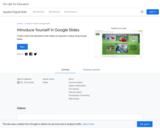
Create a slide that represents what makes you special or unique using Google Slides. Time to complete: 45-90 minutes